Finding the lowest price cell phone plans isn’t just about grabbing the cheapest monthly rate — it’s about balancing cost with coverage, data needs, flexibility, and hidden fees. In this article, you’ll discover how to navigate the mobile carrier landscape, identify what “low cost” really means, compare options, and ultimately pick a plan that fits your usage without overpaying.
What Does “Lowest Price Cell Phone Plans” Really Mean?
“Lowest price cell phone plans” generally refers to mobile plans that offer the minimal cost for acceptable service i.e., you get what you need (calls, texts, some data) at the lowest possible monthly rate. But that definition is subjective: the lowest plan for one person might be too limiting for another.
- For a light user (mostly Wi-Fi, occasional calls, occasional data), lowest price might mean $10–15/month.
- For someone who uses moderate data, lowest price might shift to $20–30/month for 5–10 GB.
- For heavy users (streaming, hotspot, international use), “lowest” might still be $30–40+ but optimized for value.
Thus, when pursuing the lowest price cell phone plans, you must ensure you aren’t sacrificing essential service or getting hidden charges.
Key Factors That Affect Plan Costs
To choose among offerings and spot hidden traps, understand these core factors that influence plan pricing.
Network Coverage & Quality
The strength, reach, and reliability of the network are perhaps the single most important consideration. A $10 plan is worthless if you can’t get signal where you live, work, or travel.
- Major carriers (Verizon, AT&T, T-Mobile in the U.S.) generally offer strong wide-area coverage.
- Some low-cost plans are offered by MVNOs (mobile virtual network operators) which piggyback on big carriers’ networks. The performance may vary (e.g. deprioritized data during network congestion).
- Always test your signal strength via coverage maps or ask neighbors about their service.
Data Allowance & Throttling
Data is a big cost driver. The more high-speed data you include, the higher the base price. But also watch for:
- Throttling: After a certain data cap, speeds may be drastically reduced.
- Cut-offs or extra charges: Some plans end data completely once cap is reached, or charge per extra GB.
- Tethering / hotspot: Many low-cost plans restrict or disallow hotspot usage, or count it against your data.
Additional Extras and Fees
The sticker rate is rarely the full story. Consider:
- Taxes & regulatory fees: These can add 10–20% over the base rate.
- Activation / SIM / eSIM fees: One-time cost for starting service.
- Overage fees: Charges when you exceed data/minutes.
- International calls / roaming: If you travel or call abroad, these extras can add up.
- Service surcharges, line access fees: Sometimes hidden in fine print.
A deceptively “cheap” plan can suddenly become expensive once all extras are added.
Contract vs. No-Contract (Prepaid / MVNO) Models
- Postpaid / contract: Often includes perks (device financing, bundled services) but locks you in and may have penalty for early termination.
- Prepaid / no-contract / MVNO: You pay only for what you use; often more flexibility, no credit checks, and lower cost. You lose some perks, but gain control.
Many of the lowest price cell phone plans come from prepaid and MVNO services.
Top Examples of Low-Cost Plans to Consider
Below are representative real-world plans (primarily in the U.S.) that illustrate what “lowest price cell phone plans” look like today. Use them as benchmarks; your local market may differ.
US Mobile – “By the Gig” $10 Plan
One standout is US Mobile’s 2GB “By the Gig” plan for $10/month.
What it includes:
- Unlimited talk & text on major networks
- 2 GB of high-speed data
- After 2GB, you can top up more data (e.g. $2/GB)
- Uses AT&T / T-Mobile / Verizon networks (via their infrastructure)
- Transparent pricing, no hidden fees included in the base rate
This type of plan is ideal for a light-data user. But if you routinely exceed 2GB, this may not be truly “lowest cost” overall.
Tello Mobile Plans
Tello Mobile is an MVNO running on T-Mobile’s network.
Some features:
- Flexible, customizable plans (you pick minutes, texts, data)
- No contract, cancel anytime
- For small to moderate data users, Tello often appears in “best cheap plans” lists
- Because it piggybacks on T-Mobile’s network, coverage is strong in many areas
Tello is a good example of how low-cost plans often trade off “extras” (like device promotions or high-tier perks) for cheaper service.
Visible Unlimited $25 Plan
Visible offers an unlimited data, talk, and text plan for $25/month with taxes and fees included.
Highlights:
- Uses Verizon’s network
- Unlimited mobile hotspot (though at a lower speed cap)
- No hidden fees
- Occasionally promotional pricing brings it even lower (e.g. $19/month deal)
A flat-rate unlimited option like this is compelling when your data use is unpredictable no overage surprises.
Connect by T-Mobile Plans (starting $15)
Connect by T-Mobile, a prepaid brand, offers:
- $15/month for 5 GB data + unlimited talk/text
- $25 for 8 GB, $35 for 12 GB
- No contracts or credit checks
- Uses T-Mobile’s infrastructure
- Some features like video streaming quality may be capped (e.g. SD) in lower tiers
This shows how a “lowest price” can begin with a moderate data allotment rather than just minimal.
Other budget carriers & MVNOs
A few more to watch (depending on your region):
- Gen Mobile: plans from $10, with international call perks included on higher tiers.
- Cricket Wireless, Boost Mobile, Straight Talk: budget-friendly prepaid options.
- FreedomPop: used to offer free or super low-cost plans, but free-tier has largely been phased out current base is ~$10 for 1 GB.
- Google Fi: starts from $20/month (calls & texting), with data either included or charged by GB.
These help fill the spectrum of what “lowest price” plans look like in different niches (data-light users, international needs, etc.).
How to Evaluate Which Low-Cost Plan Is “Lowest Price” for You
To ensure you pick not just a low-cost plan, but the right lowest-cost plan, follow this decision framework.
Estimate Your Monthly Usage
Track over a few months:
- How many minutes of calls you make
- How many texts
- How much data you use
- Whether you tether/hotspot
This baseline tells you whether a $10 plan is realistic or doomed to overage.
Check Network Signal in Your Area
Even a low-cost plan is worthless if coverage is poor. Use:
- Carrier coverage maps
- Crowd-sourced apps (e.g. OpenSignal, RootMetrics)
- Ask neighbors or test with a friend’s phone
If your service drops frequently, you’ll end up paying more (in frustration or fallback options).
Look for Total Cost, Not Just Sticker Rate
Add up:
- Base rate
- All taxes & regulatory fees
- Activation / SIM costs
- Overage penalties
- Add-ons and extras
A plan advertised at $10 but with $5–10 extra per month in hidden costs might actually be more expensive than a $15 plan that’s all-inclusive.
Flexibility, Upgrade & Add-on Options
Good features in a “lowest price” plan:
- Ability to upgrade data/feature for the next month
- No long-term lock-in
- Bring-your-own-device / unlocked phone compatibility
- Easy management / switching
You don’t want to feel trapped just because you chose a cheap plan.
Tips & Tricks to Lower Your Monthly Cell Bill
Here are smart strategies to squeeze the cost even further:
- Bundle with other services
Some carriers offer discounts if you bundle cell + internet + TV. - Prepay for multiple months / annual discounts
Some plans offer a lower effective monthly rate if you pay for 6 or 12 months upfront. - Use Wi-Fi and offline modes
Maximize your usage on Wi-Fi to minimize cellular data usage. - Disable background data & auto-updates
Many apps silently consume mobile data; restrict them to Wi-Fi. - Refuse or periodically renegotiate add-ons
Things like device protection, insurance, or “premium features” often hike the bill. - Watch for promos / special deals
Carriers occasionally roll out promos (e.g. Visible’s $19/month) that temporarily undercut standard rates. - Switch carriers when your contract expires
Use leverage to get a new customer promotion rather than renewing at full rate.
Case Studies / Sample Scenarios
Here are some illustrative personas and the lowest price cell phone plan that might suit them best:
| Persona | Usage Pattern | Best Low-Cost Plan | Why It Fits |
|---|---|---|---|
| Light user (calls + <2 GB data) | No hotspot, minimal streaming | US Mobile $10 “By the Gig” | Covers needs at lowest base cost |
| Moderate user (5–10 GB) | Occasional hotspot, streaming | Tello or Connect $15–25 tier | Balanced data without overspending |
| Heavy user / unlimited desire | Frequent streaming, hotspot, travel | Visible $25 unlimited | Flat rate covers high usage |
| Traveler / international calls | Frequent calls abroad | Gen Mobile or Google Fi | Built-in international benefits |
| Local area with weak signal | Rural or fringe reception zones | Carrier’s own low-cost brand | Better access to towers & support |
These sketches show that “lowest price” is context-dependent.
What’s New?
-
Promotion-driven ultra-low pricing
For example, Visible recently dropped its unlimited plan to $19/month for new customers — a record low.
Also, Mint Mobile now offers introductory unlimited plans at $15/month (when prepaid/12 months) on the T‑Mobile network.
These deals push the boundary of what “lowest price” really means. -
Refinement of “budget” vs “value” distinction
Guides in 2025 highlight that it’s not just about the lowest dollar number it’s about how much data, network quality, perks (e.g., hotspot, roaming) you get for that price.
So what counts as “lowest price” is shifting: a $10 plan might be lowest, but a $15 plan with better coverage/data may actually be better value. -
Plans starting even lower / free-tier options
One source shows a truly free plan: TextNow’s $0 Free Flex plan offering 1 GB data for essential use.
This indicates that “lowest price” is reaching threshold levels where the cost is nearly nil (though with limited service). -
MVNOs and network piggy-backing gaining traction
Many of the lowest price plans continue to come from MVNOs (mobile virtual network operators) rather than major carriers. For example, Mint Mobile, Tello, US Mobile are repeatedly highlighted.
This means the big carriers’ baseline “budget” plans may no longer be the lowest; the trick is hunting the MVNO offers. -
Price locks & mitigation of rate hikes
Some carriers are introducing price-lock guarantees or better transparency to avoid surprise hikes. For example, Verizon Communications offered a 3-year price lock on some wireless bundles.
While this isn’t exactly about lowest entry price, it affects the “worst-case” cost of being in a low-cost plan (i.e., will the price jump later?).
What This Means for You
-
If you’re seeking the lowest price cell phone plan right now, you have more serious options than ever: sub-$20 unlimited (for new customers) or ultra-low data plans under ~$10.
-
But: lowest price often comes with trade-offs (e.g., limited data, network deprioritization, fewer perks). So you’ll want to check the terms carefully.
-
Plans that were “cheap” a year or two ago may no longer be best value compared to the new promos it pays to re-shop.
-
If you live outside major urban areas or need strong roaming/hotspot/priority data, the “lowest priced” may not perform as well as the slightly higher-priced plan.
-
Prepaid and MVNO plans remain the sweet spot for lowest price; Big-Carrier “budget” plans don’t necessarily compete anymore.
Things to Watch / Caveats
-
Promotions often have conditions (e.g., new customers only, prepayment required, limited time) — make sure the plan you pick isn’t just an introductory bait.
-
Network coverage & speed matter: a very cheap plan on a weaker network or with deprioritized data may cost you in experience.
-
Read the fine print about data caps, hotspot usage, international roaming, contract terms.
-
Taxes & fees: Sometimes the advertised price is “before taxes & fees” which can change the real monthly cost.
-
Longevity: Some ultra-low offers might raise in price after the promo period ends check if the rate is locked or not.
Conclusion
Securing the lowest price cell phone plans is not simply about opting for the cheapest advertised rate. Instead, it’s about aligning your usage, coverage needs, and flexibility with a plan that minimizes wasted cost and surprises.
Start by auditing your usage, test carrier coverage locally, compare real all-in prices (not just sticker rates), and pick a plan with room to grow or change. With thoughtful choice, many users can reduce their mobile bill dramatically while still getting solid service.
Also Read: T-Mobile Phone Prices: What You Should Know (2025 Edition)
FAQs
Q1: Can you really get a functional cell plan for $10/month?
Yes — for light users. MVNOs like US Mobile offer 2 GB plans around $10 with unlimited talk/text. But if you regularly exceed that data, overage charges will erode the savings.
Q2: Will low-cost plans slow down my data (throttling)?
Potentially. Many budget/MVNO plans deprioritize or throttle after certain thresholds, especially during network congestion. Always read the fine print and understand throttling policies.
Q3: Can I keep my current phone number / use my existing phone?
In many cases yes, especially with no-contract or prepaid plans. Look for plans that support number porting and bring your own device (BYOD) to avoid needing a new handset.








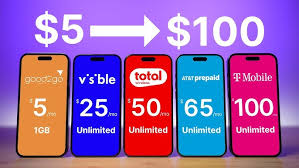

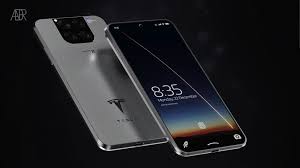

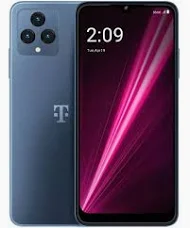



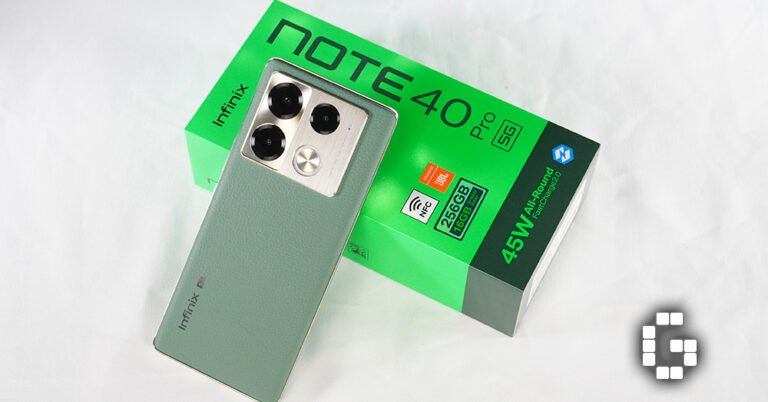
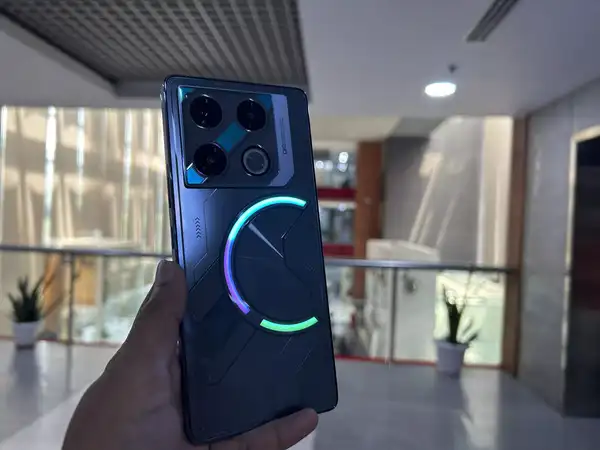
+ There are no comments
Add yours